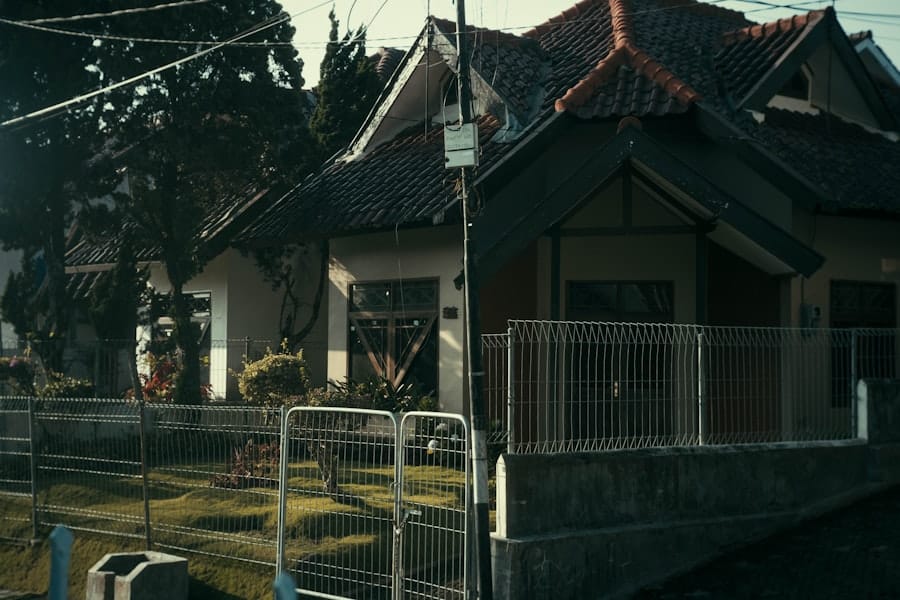Digital twins represent a revolutionary approach to building management, particularly in the context of eco-buildings, which prioritize sustainability and energy efficiency. A digital twin is a virtual replica of a physical entity, in this case, a building, that simulates its real-time performance and behavior. This technology leverages data from various sources, including sensors, IoT devices, and historical records, to create a dynamic model that reflects the current state of the building.
By integrating physical and digital realms, stakeholders can gain insights into how the building operates, identify inefficiencies, and make informed decisions to enhance its performance.
They allow architects, engineers, and facility managers to visualize complex systems and interactions within the building.
For instance, a digital twin can simulate how changes in occupancy levels affect energy consumption or how different materials respond to environmental conditions. This capability not only aids in the design phase but also supports ongoing management and optimization throughout the building’s lifecycle. By understanding the intricate relationships between various building components, stakeholders can implement strategies that align with sustainability goals.
Key Takeaways
- Digital twins in eco-buildings are virtual replicas that mimic the physical building and its systems, allowing for real-time monitoring and analysis.
- Data collection and analysis play a crucial role in digital twins, providing valuable insights for predictive maintenance and energy efficiency in eco-buildings.
- Predictive maintenance and energy efficiency are key benefits of using digital twins in eco-buildings, helping to reduce operational costs and minimize environmental impact.
- Digital twins can be used to monitor and improve indoor air quality, ensuring a healthy and comfortable environment for building occupants.
- By using digital twins, it is possible to predict the lifespan of building materials, enabling proactive maintenance and sustainable resource management.
The Role of Data Collection and Analysis in Digital Twins
Data collection is the backbone of digital twin technology, enabling the creation of accurate and actionable models of eco-buildings. Various data sources contribute to this process, including environmental sensors that monitor temperature, humidity, air quality, and energy usage. Additionally, building management systems (BMS) provide critical information about HVAC operations, lighting systems, and occupancy patterns.
The integration of these diverse data streams allows for a comprehensive understanding of how the building functions in real-time. Once data is collected, advanced analytics come into play. Machine learning algorithms and data analytics tools process this information to identify patterns and trends that may not be immediately apparent.
For example, by analyzing historical energy consumption data alongside real-time sensor readings, facility managers can pinpoint anomalies that indicate potential issues or inefficiencies. This analytical capability transforms raw data into valuable insights that inform decision-making processes. In eco-buildings, where resource optimization is paramount, such insights can lead to significant improvements in energy management and operational efficiency.
Predictive Maintenance and Energy Efficiency in Eco-Buildings

Predictive maintenance is one of the most compelling applications of digital twins in eco-buildings. By continuously monitoring the condition of building systems through real-time data analysis, facility managers can anticipate equipment failures before they occur. For instance, if a digital twin detects unusual vibrations or temperature fluctuations in an HVAC unit, it can alert maintenance personnel to investigate further.
This proactive approach not only reduces downtime but also extends the lifespan of critical systems, ultimately leading to lower operational costs. Energy efficiency is another area where digital twins excel. By simulating various scenarios—such as changes in occupancy or adjustments to HVAC settings—stakeholders can evaluate the potential impact on energy consumption.
For example, a digital twin might reveal that adjusting the thermostat by just a few degrees during peak hours could lead to substantial energy savings without compromising occupant comfort. Furthermore, these simulations can help identify opportunities for integrating renewable energy sources or optimizing energy storage solutions. The result is a more sustainable building that aligns with eco-friendly principles while also reducing operational expenses.
Using Digital Twins to Monitor and Improve Indoor Air Quality
Indoor air quality (IAQ) is a critical aspect of building performance that directly affects occupant health and comfort. Digital twins facilitate continuous monitoring of IAQ by integrating data from various sensors that measure pollutants such as volatile organic compounds (VOCs), carbon dioxide levels, and particulate matter. By analyzing this data in real-time, facility managers can identify sources of contamination and take corrective actions promptly.
For instance, if a digital twin indicates elevated levels of CO2 in a conference room during meetings, it may suggest inadequate ventilation or over-occupancy. Armed with this information, managers can adjust HVAC settings or implement strategies such as demand-controlled ventilation to improve air quality. Additionally, digital twins can simulate the effects of different ventilation strategies on IAQ, allowing stakeholders to make informed decisions about system upgrades or modifications.
This proactive approach not only enhances occupant well-being but also contributes to overall building sustainability by ensuring that energy use for ventilation is optimized.
Predicting the Lifespan of Building Materials with Digital Twins
The longevity of building materials is a crucial consideration in eco-building design and management. Digital twins enable stakeholders to predict the lifespan of various materials by simulating their performance under different environmental conditions and usage scenarios. For example, a digital twin can model how exposure to moisture affects the durability of wood or how temperature fluctuations impact concrete integrity over time.
By analyzing historical data alongside real-time monitoring results, facility managers can make informed decisions about maintenance schedules and material replacements. This predictive capability not only helps in planning for future repairs but also minimizes waste by ensuring that materials are used efficiently throughout their lifecycle. Moreover, understanding material performance can guide architects and builders in selecting sustainable materials that align with eco-building principles while ensuring structural integrity.
Integrating IoT and Sensor Technology for Real-Time Monitoring

The integration of Internet of Things (IoT) technology with digital twins is pivotal for achieving real-time monitoring capabilities in eco-buildings. IoT devices equipped with sensors collect vast amounts of data related to various building systems—ranging from energy consumption to environmental conditions. This data feeds directly into the digital twin model, creating a dynamic representation of the building’s performance.
For instance, smart thermostats can adjust heating and cooling based on occupancy patterns detected by motion sensors. When integrated with a digital twin, these adjustments can be analyzed for their impact on overall energy efficiency and occupant comfort. Furthermore, IoT devices can facilitate remote monitoring and control of building systems, allowing facility managers to respond swiftly to any anomalies detected by the digital twin.
This level of integration not only enhances operational efficiency but also supports sustainability goals by optimizing resource use across the building.
The Environmental and Cost Benefits of Digital Twins in Eco-Buildings
The implementation of digital twins in eco-buildings yields significant environmental benefits by promoting resource efficiency and reducing waste. By providing insights into energy consumption patterns and identifying areas for improvement, digital twins enable stakeholders to implement strategies that minimize environmental impact. For example, optimizing HVAC operations based on real-time occupancy data can lead to substantial reductions in energy use while maintaining occupant comfort.
From a financial perspective, the cost benefits associated with digital twins are equally compelling. Predictive maintenance capabilities reduce unexpected repair costs by addressing issues before they escalate into major problems. Additionally, improved energy efficiency translates into lower utility bills over time.
Ultimately, these combined benefits create a compelling case for adopting digital twin technology in eco-buildings.
Overcoming Challenges and Considerations for Implementing Digital Twins in Eco-Buildings
Despite the numerous advantages offered by digital twins in eco-buildings, several challenges must be addressed for successful implementation. One significant hurdle is the initial investment required for technology adoption. Integrating IoT devices, sensors, and advanced analytics tools necessitates upfront costs that may deter some stakeholders from pursuing this innovative approach.
Moreover, ensuring data security and privacy is paramount when implementing digital twins. As buildings become increasingly connected through IoT devices, they also become more vulnerable to cyber threats. Stakeholders must prioritize robust cybersecurity measures to protect sensitive information while maintaining seamless operations.
Another consideration is the need for skilled personnel who can manage and analyze the vast amounts of data generated by digital twins. Training existing staff or hiring new talent with expertise in data analytics and building management systems is essential for maximizing the benefits of this technology. In conclusion, while challenges exist in implementing digital twins within eco-buildings, the potential rewards—ranging from enhanced operational efficiency to significant environmental benefits—make it a worthwhile endeavor for those committed to sustainable building practices.
As technology continues to evolve and mature, overcoming these challenges will pave the way for broader adoption of digital twins in the quest for greener buildings.
In a related article, Smartwatches Fossil Review 2023, the latest advancements in wearable technology are explored, showcasing how smartwatches are evolving to meet the needs of consumers in the coming years. Just as digital twins are revolutionizing the way eco-buildings are managed and maintained, smartwatches are becoming more sophisticated in their capabilities, offering users a wide range of features and functionalities. Both articles highlight the innovative ways in which technology is shaping our world and improving our daily lives.
FAQs
What are digital twins?
Digital twins are virtual replicas of physical objects, processes, or systems that can be used for various purposes such as monitoring, simulating, and predicting their behavior.
How are digital twins used in eco-buildings?
Digital twins are used in eco-buildings to create virtual models that replicate the building’s design, construction, and operation. These models can be used to monitor energy usage, predict maintenance needs, and optimize building performance.
How do digital twins predict the lifecycle of eco-buildings?
Digital twins use real-time data from sensors and other sources to simulate the behavior of eco-buildings over time. By analyzing this data, digital twins can predict potential issues, optimize energy usage, and forecast the lifecycle of building components.
What are the benefits of using digital twins for eco-buildings?
Using digital twins for eco-buildings can help improve energy efficiency, reduce maintenance costs, and extend the lifecycle of building components. It also allows for better decision-making and proactive management of building operations.
Are there any challenges in implementing digital twins for eco-buildings?
Challenges in implementing digital twins for eco-buildings include the need for accurate data collection, integration with existing building systems, and ensuring the security and privacy of the data being used.

